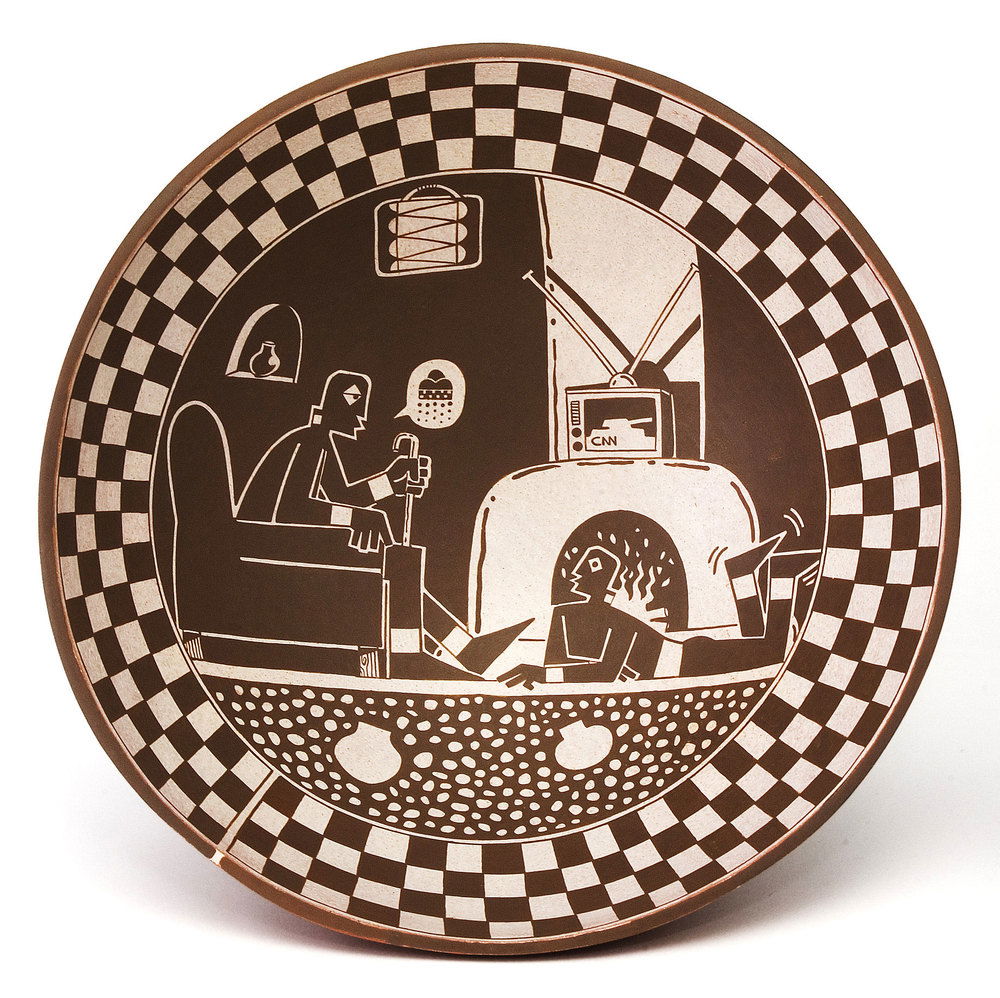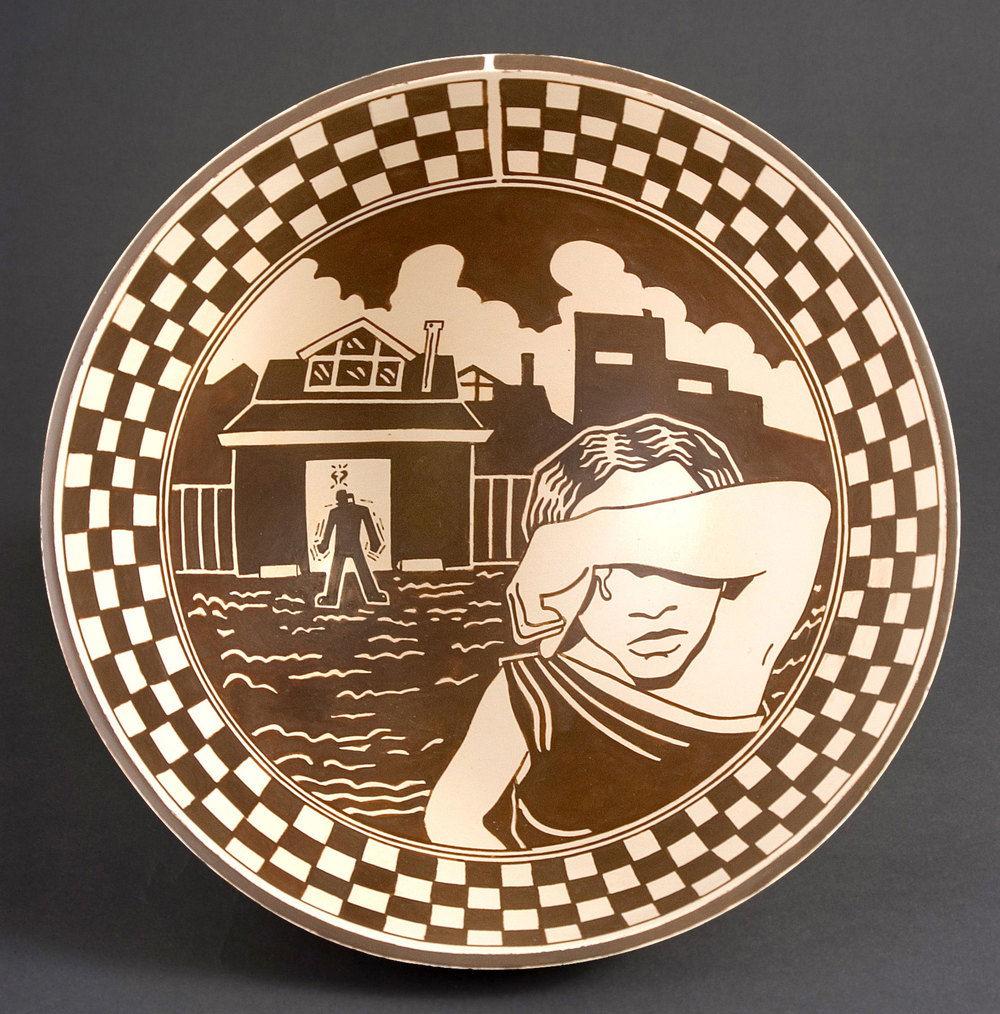
Photo by the Museum of Indian Arts & Culture, Santa Fe, NM.
Firmly positioning his work within an Indigenous visuality, Diego Romero has built a career constructing ceramic vessels that elevate Pueblo life to Olympian stature. A third generation professional artist, Romero was born and raised in Berkeley, California to a Cochiti father and a non-Native mother. Upon completing high school, he returned to ancestral Pueblo lands and attended the Institute of American Indian Arts, before subsequently attaining degrees from Otis College of Art and Design (BFA) and University of California, Los Angeles (MFA).Since earning an MFA in 1993, Romero has developed an extensive exhibition record with works housed in significant public collections such as the Metropolitan Museum of Art, the Cartier Foundation, the Peabody Essex Museum, the Denver Art Museum, the Heard Museum, the British Museum, and the Scottish National Museum.Working in a narrative style that evokes pre-contact Mimbres pottery, as well as Greek amphorae (two-handled vases) and Anasazi ceramics, Romero’s earthenware bowls and handled-vessels investigate the marginalized status of Indigenous history and society. Evoking the anti-colonial writing of Frantz Fanon, who believes that “the native intellectual who wishes to create an authentic work of art realize[s] that the truths of a nation are in the first place its realities,” Romero states that instead of using Indigenous “tradition” as insulated from historical change, he consciously evokes “the historic as a point of departure to reinterpret the contemporary.” By using historically situated oral traditions as source material, Romero departs visually from the canonical work of Pueblo pottery and instead relies heavily on a narrative style gleaned from comic books and popular culture, specters of a childhood spent mingling in comic book stores. The resulting composition transcends the materiality of the object and engages the viewer in humorous interplay in which the author’s overt anti-colonial content is seen as non-threatening to audiences and collectors. The confrontational and subversive nature of the work is commonly overlooked in lieu of Romero’s excellent craftsmanship and artistry.Merging autobiography with narratives of contemporary Indian life and stories of Pueblo resistance to colonial violence, Romero elevates Pueblo and contemporary Indian narratives to the level of the superhero, devices he draws from Greek pottery and comics. When placed into an autobiographical context, his ceramic practice develops further layers of nuance and complexity. This investigatory nature of simultaneously inserting biographical material while interrogating the cross-sections of Indian life enables Romero to transcend the commonly provincial status of contemporary Indian art.
Donor -USA Gracie Fellow
This artist page was last updated on: 07.08.2024

Grandfather Diego by Diego Romero. Ceramic vessel.
Photo courtesy of Robert Nichols Gallery, Santa Fe, NM.

Colossal Heads by Diego Romero. Ceramic vessel.
Photo Courtesy of Robert Nichols Gallery, Santa Fe, NM.

Chongo Love by Diego Romero. Ceramic vessel.
Photo courtesy of Clark + Del Vecchio, Santa Fe, NM.